#Common Bluetail
Text
@fastman27 submitted: Who is this distinguished fellow?
Location: [removed] (Please remove.)

Definitely a damselfly, and maybe a common bluetail, but I'd be more confident about that ID with a clearer photo :)
62 notes
·
View notes
Text
Cannibalism On The Bay

A damselfly that was still alive but barely in the Kingfisher Lake. Photo credit: Jonathan Chua.
A female Common Bluetail had her abdomen chewed off at the 1st segment by one of her own. What happened next could just make some sick; after devouring the abdomen, her cannibalistic kin came back for her head. A sad, ugly reality of life in this fallen world.
The damselfly was about a metre (a little over 1 yard) out on the lake and was back-lit by the late morning sun. A 2-stop positive exposure compensation was apparently still not sufficient so some local brightening was needed in post to adequately light up the damselfly.
#photographers on tumblr#canon 55-250mm#common bluetail#damselfly photos#flora fauna#insect pics#Ischnura elegans#macro photography#photography editing#photography tips#sony a7r#sony photography
3 notes
·
View notes
Text
Creature Awaits #244
Each week I plan to feature an amazing creature, admiring God's fantastic artistry. Hopefully it’ll brighten someone’s day to see something new and interesting if they haven’t seen it before. : )
As the Pantone color of the year is "Peach Fuzz", so we'll dive into the second month of this relatively new year by featuring creatures of this cozy, comforting color. : )

(A beautiful capture taken by Jörg Hempel (CC BY-SA 3.0 DE Deed))
The Blue-Tailed Damselfly
A.K.A: The Common Bluetail
Scientific Name: Ischnura elegans
Region: Near still or slow waters throughout Europe and the Middle East
Size: About 1.1"-1.4" (~2.7cm-3.5cm) long with a roughly 1.4" (~3.5cm) wingspan
Interesting Notes: Interestingly, while male adults of this species are primarily blue and black, and female adults are either the same or sport a green or brown thorax, juvenile females of this species can range widely in color. They are generally lighter in tone overall and can range anywhere from violet to green to peach (as pictured.) : )
#creatureawaits#beautiful animals#beautiful insects#elegant animals#interesting animals#Blue-Tailed Damselfly#Common Bluetail#Ischnura elegans#peach animals
1 note
·
View note
Text

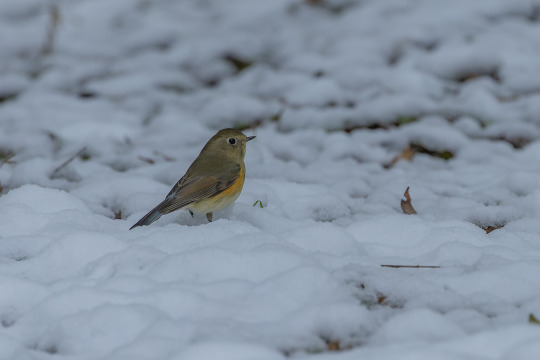
カワセミ(Common Kingfisher)
ルリビタキ(Red-flanked Bluetail)
300 notes
·
View notes
Text
Hello Tumblr people
My name is Day, I am 21 years old and a full time ecology student. I've been studying ecology/biology for about 9 years, and yet I hear stories on the regular that leave me absolutely baffled.
I want so share some of my favourites with you, enjoy :) (will probably be updated over the course of time)
Parrots can be taught how to videocall, and actively enjoy calling with other parrots (Kleinberger et. al, 2024)
Some species of (wild) eel only procreate in/close to the bremuda triangle (Nolte, 2020; Browne, 2021)
(google on own discression) Snail love arrows. It's fucking WILD.
Female common bluetails (damselfly) have evolved to look physically exactly like male common blue tails so they are left alone during mating season (Kuta, 2023)
People feeding their christmas tree to goats because it's good for their health (in moderation!) (Laufenberg, 2024)
CHIMPANSEES SLEEP IN NESTS (Wikipedia, n.d.a) As someone who knows nothing about primates, this was an eye opener to me
Talking about monkeys, This video (I taught an ape how to play minecraft)
(CW// animal neglect) "Cloth mothers" (and the maternal-separation tests in general) (Wikipedia, n.d.b)
Researchers continuously trying to bring back extinct animals (such as heck cattle)
The entirety of Flevoland, Netherlands. They really just- did that.
Het Diemerpark, Amsterdam, NL. A park build on thousands of kilo's chemical waste and trash. They just put a big box over it and moved on like it was nothing (Gemeente Amsterdam, n.d.; AGV, n.d).
Why are there so many ways to photosynthensise???
The mirror test, and the single elephant that passed the test (Wikipedia, n.d.c.)
(I wish I had a better source, but for now this will do TvT. It's something my teacher shared in a lecture). Dutch zoo houses rhino's and cows in same area. Calf annoys rhino. Rhino yeets calf into the air, calf breaks his leg, heals, does it again, gets yeeted again, breaks leg again (Damen, n.d.).
Some places place green-light lanterns in the street because green = good for the invironment. This is absolute bullshit. Green is one of the worst colors, and was originally introduced to chase away geese (Spoelstra, 2017).
Currently don't have a source, it was shared during a reading of a ecologist. There's a population of wolves that live soley of fish and stranded carcasses. Wolves have cultures, and you can sometimes tell which wolf belongs to which family based on their diet.
(THANKS TO USER TIGOTEUS!!) Koi (Cyprinus carpio) can be taught recognise and tell the difference between music genres (Chase, 2001). THIS IS SO COOL I DID NOT KNOW THIS. Also shout out to fish Pepi, he tried his best.
Now I shall continue writing the actual essay that I need to finish by tomorrow LMAO <3
#ecology#biology#animals#Idk why I wrote this#I have a lot more important things to do#but alas#I am very exited about the fish study#Its genuinely such an interesting read#My local libary has the Was Fische Wissen book in stock#I might actually go get it. It sounds awesome
5 notes
·
View notes
Photo

Guess I’ll die / This is fine - dragonfly with meme potential :D
Snapshot from our vacation at the Mecklenburg Lake Plateau. It was a beautiful week, lots and lots of hiking to bird and insect watching spots. We ticked many boxes of the “Lake Pokédex” with ospreys, white-tailed eagles, a bittern, red-backed shrikes, a golden oriole, kingfishers, scarce chasers, a migrant hawker, a brown hawker, common bluetails with alternate colorations (Shinys? :D) and absolute heaps of black-tailed skimmers, ruddy and scarlet darters. I’ll post photos of them in the next days :)
83 notes
·
View notes
Photo

Common bluetail damselfly (Ischnura heterosticta) by Red Wolf
0 notes
Text

Male Common Bluetail Damselfly, Ischnura elegans Canon 400D EF 100 2.8 f/4 1/100 iso: 200 Prague, Czech Republic May 20, 2008
#damselflies#Coenagrionidae#Odonata#dragonflies#insects#invertebrates#macro#insectphotography#insect
0 notes
Text
Ffxiah slice bluetail

FFXIAH SLICE BLUETAIL HOW TO
But for such a piscine specimen to be mistaken for a blade of pure metal. Doubtless it was a fish or similar sea creature of a more aggressive nature. Best of luck At least the other fish were easier. One day, I decided on a whim and caught it on second cast with shrimp lure. Blades do not emerge from the depths of the sea. I spent a few days there with SEVERAL casts, trying both shrimp lure and bluetail. The more superstitious of the common folk went stark mad, claiming that it was long-forgotten spirits from the Kingdom of Ephramad come to exact vengeance on the living. The young lad fainted from fright, and when he opened his eyes found himself surrounded on all sides by curious Qiqirns. Owners, operators, pilots, maintenance teams, prospective buyers & aviation lenders collaborating together. All aircraft records will be in one place, organized, searchable and shareable. A blade of the purest silver burst from the sea and came crashing down, threatening to cleave the vessel from stem to stern. Peace of mind that your aircraft records are fully protected against loss or damage. Root Food Fish: Info: Stock: 2: Stack Price: 10000 (10000 per) Rate: 0. His vessel became shrouded in fog, and he scarce could see more than several ilms in front of himself. Bluetail stack: These saltwater fish are common in the coastal waters near Mindartia. An otherwise nondescript weaver spouted a most unusual experience he had when traversing the Silver Sea toward Azouph Isle. Irmilant "Ah, many a traveler has been wooed by the tale of the quicksilver blade, a myth from Aht Urghan on the Aradijah continent that locals hold to be true.
FFXIAH SLICE BLUETAIL HOW TO
Resale Price: 2,880~2,937 gil How to ObtainĬannot be obtained as a random reward from the Gobbie Mystery Box Special Dial and similar sources.

0 notes
Photo

Common Bluetail Kingdom:Animalia Phylum:Arthropoda Class:Insecta Order:Odonata Suborder:Zygoptera Family:Coenagrionidae Genus:Ischnura Species:I. elegans #animalovers #animals_in_world #animalplanetindia #kingdomanimalia #animalkingdom #animalphotography #animals #insect #insectphotography #insects #insectsofinstagram #insects_of_our_world #insects_macro #snapseed #snapseededit #picsart #picsartedit #insects_macro #insectlovers #tanimalclicks (at Khijadiya Bird Sanctuary) https://www.instagram.com/p/CfawLq1Ko30/?igshid=NGJjMDIxMWI=
#animalovers#animals_in_world#animalplanetindia#kingdomanimalia#animalkingdom#animalphotography#animals#insect#insectphotography#insects#insectsofinstagram#insects_of_our_world#insects_macro#snapseed#snapseededit#picsart#picsartedit#insectlovers#tanimalclicks
0 notes
Photo
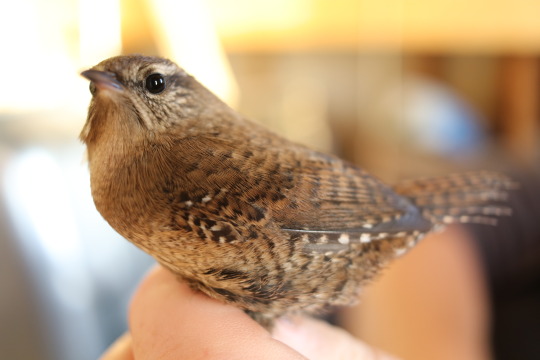
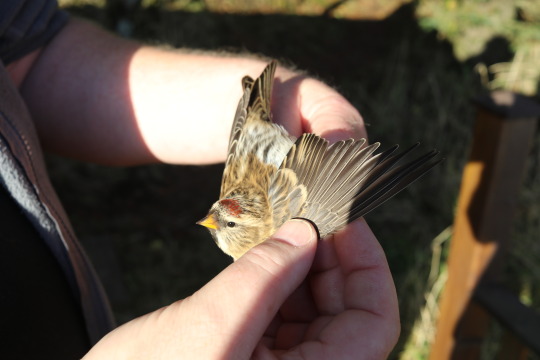
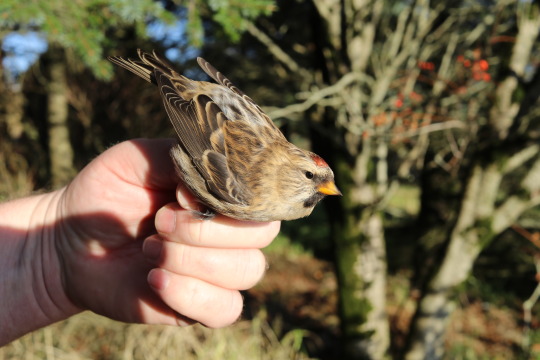
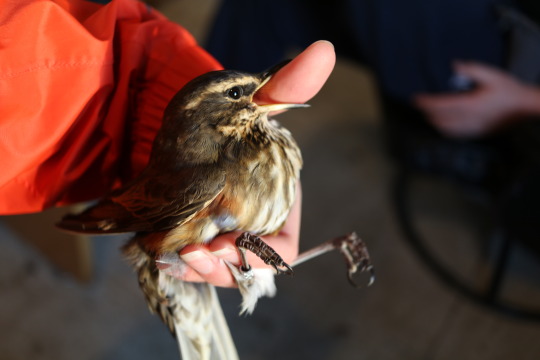
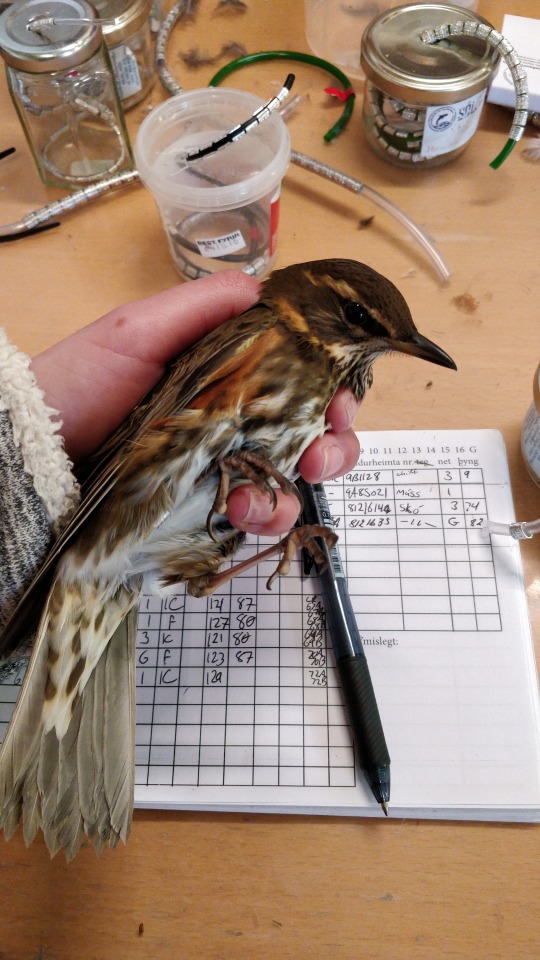
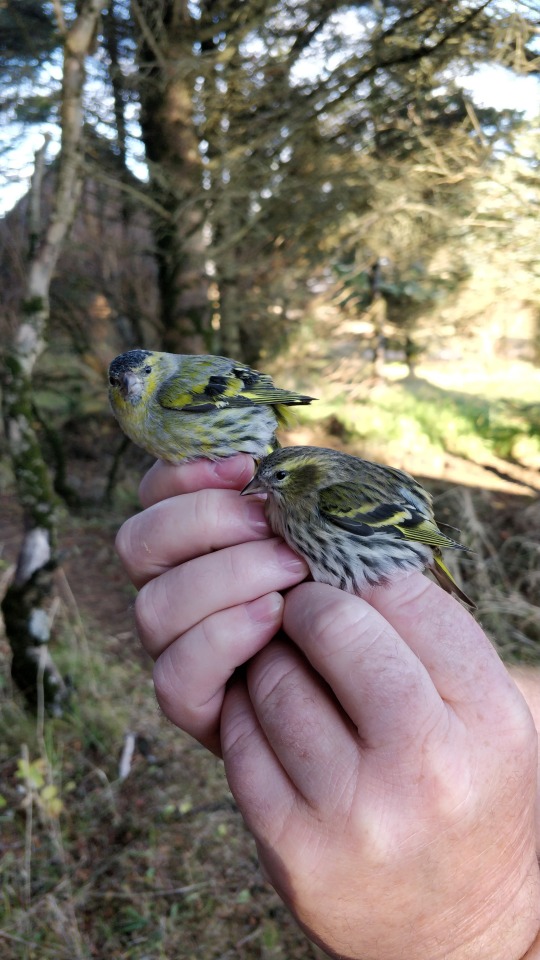
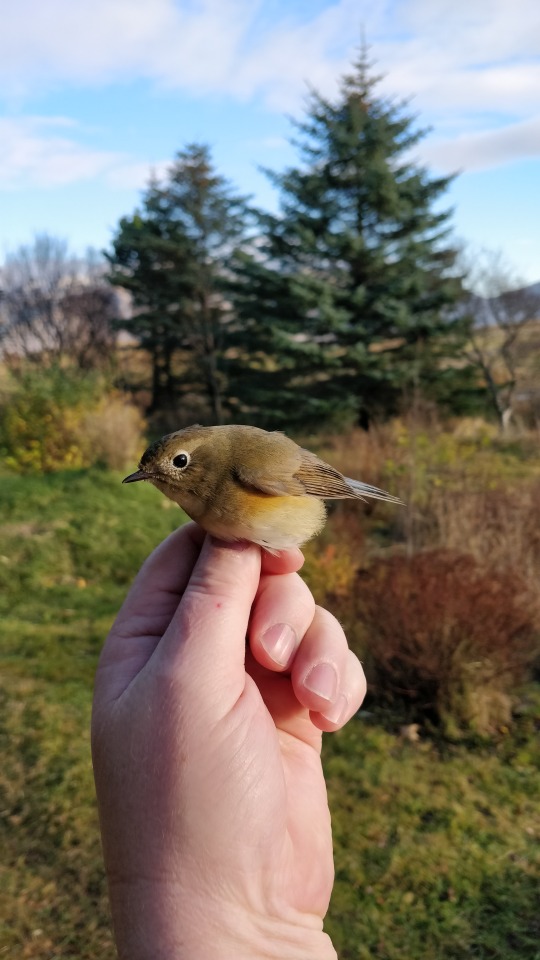
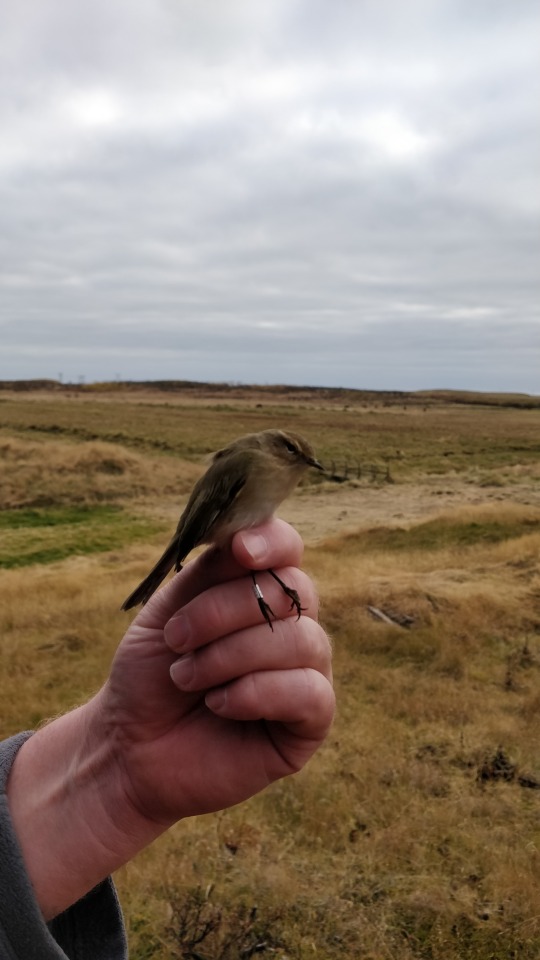
Now OK, these aren’t lichens. I know cause I’m a scientist. But my field work in Iceland involved lichens AND birds. I don’t know if any of my followers are into birds, but I figure some of y’all might have diverse interests and might appreciate these cuties I ringed!
From top to bottom:
Common Wren (Troglodytes troglodytes islandicus)
Redpoll [2] (Acanthis flammea islandicus)
Redwing [2] (Turdus iliacus)
Eurasian siskins [M and F] (Spinus spinus)
Red-flanked bluetail (Tarsiger cyanurus)
Common chiffchaff (Phylloscopus collybita)
#birds#not lichens#ornithology#bird ringing#science#field work#biology#ecology#Iceland#pictures of birds
313 notes
·
View notes
Text
In-depth Work

A male Common Bluetail clasping on tightly as his mate laid eggs underwater. Photo credit: Jonathan Chua.
#photographers on tumblr#canon eos rp#canon photography#common bluetail#damselfly photos#flora fauna#insect pics#Ischnura senegalensis#macro photography#tamron 16-300mm
0 notes
Photo

Common bluetail (Ischnura senegalensis) at Gorongosa National Park in Mozambique
Judy Gallagher
38 notes
·
View notes
Text
Wildlife of the Windswept Plateau
Hey I've decided to make this a series. Next on my list of "researcher documents the Flights native wildlife" we have the Wind Flight! I hope this is at least a good jumping off point for you writers/RPers/Worldbuilders!
Includes little personal notes here and there about possible uses, ecology and real-life equivalents, and interesting notes from the items bio too.
Calling this series “Ecology of Sornieth” where I detail:
Wildlife.
Aquatic life.
Insects.
Plant life.
???.
Long post ahead. Cut for convenience.
Wild Life:
Balsas Anole (Able to change color based on mood. probably a popular catch for hatchlings)
Plague Bat (Bats native to the Scarred Wasteland. Most likely purged for spreading diseases.)
Sun Flecked Fieldmouse (Fur sparkles in the sunlight. can leap great distances and has a tendency to brood.)
Zephyr Sparrow (Flies very high but is prone to oxygen deprivation. Tend to be short lived due to this reason. Possibly kept by dragons for it's plumage)
Broad-footed Moles (Stubborn. strangely tend to dig in opposite directions from their mates. Possibly dug up as food by hatchlings)
Cottontail Rabbit (A decent meal for dragons, probably farmed for meat and fur. hilariously large dragons might use them similarly to cottonballs.)
Hooded Hen (Can be ornery maybe? A decent meal for a dragon. Probably farmed for meat and feathers.)
Steppes Box Turtle (Known for the pattern on it's shell)
Hooded Skunk (despite being a skunk its rather docile. Probably hunted for as wild game for meat and fur)
False-Peacock Quail (Pretty plumage. A decent meal for a dragon. Probably hunted as wild game for meat and feathers)
Mallard (A decent meal for a dragon. Probably hunted as wild game for meat and feathers. Note: Irl only male Mallards have the signature green hood.)
Golden-Laced Rooster (Can reached running speeds of up to 15km an hour. Probably hunted as wild game.)
Arroyo Toad (Most dragons have developed an immunity to it's skin toxin. Mirrors however are allergic.)
Firebearer (A type of squirrel monkey. Has been observed spreading forest fires by carrying burning branches to new areas. Possibly done to flush out game from underbrush or usher in new growth in remote areas. Possibly a Keystone species?)
Fancy Rat (Possibly kept as pets. Might even be given as gifts(for pets or to eat) during special occasions)
Wallaby (Probably hunted as wild game. A decent meal for a dragon.)
Pangolin (Noted for keeping lairs insect free! Might be kept around as a form of pest control. although maybe not by insectivorous dominated clans.)
White-Eared Hummingbird (Yes birds do have ears!)
Olive Sea Snake (VENOMOUS. Aposematic. Bright blue and orange coloration warns of it's toxicity. Named not for it's color by for it's curious love of olives. Note: Irl all species of sea snake are venomous. they are close cousins to cobras and kraits.)
Grey Squirrel (Probably a common meat in stews and campfire roasts)
Tree Gecko (Has great camouflage but oddly is color blind.)
Magpie (Hunted for both their meat and hoards of shinies)
Ferret (Probably kept as popular pets/small game hunting companions.)
Sugarglider (A prime pest of Sugarmelon crops. Probably kept and bred as pets for their cuteness. Funfact: It's a possum!)
Bar-headed Goose (Probably hunted as wild game or farmed for meat and feathers.)
Crested Newt (Notable has a crest for mating displays)
Emerald Striker (VENOMOUS. Contains it's venom in the "emeralds" on it's body. Probably not safe to eat due to the "venom pockets" throughout it's body)
Silver Racoon (Named for it's love of silver ore and trinkets. Might be hunted as wild game.)
Lesser Land Iguana (apparently very self confident. I take that to mean they are aware of how dangerous they are and probably have few predators. Probably hunted if there are no other options though. Most likely avoided due to average iguana temperament (That is to say violent as hell))
Bog Canary (Has an awful call. but it's plumage is pretty and might be kept as pets (Note: Picture depicts a budgerigar not a canary))
Golden Reefprince (A type of axolotl, has a golden sheen. typically given by dragons to someone they're trying to impress. Might be farmed similarly to Valentines roses and sold for holidays and anniversaries.)
Black Swan (Probably kept as ornamental birds by the upperclass. Compete in elegant displays with each other. Probably over mating rights.)
Juvenile Prairie Skink (The adults of this species perform excellent parental care for lizards when the hatchlings are young. (Note: Maternal care in irl skinks is highly unlikely. Note 2: Art possibly depicts a jeweled lacerta instead?))
Muskrat (A native to the Gladevines of the Viridian labryinth this rodent is commonly found in aqueducts hunting small aquatic life. Probably hunted as wild game or farmed for meat and water resistant fur.)
Reedhopper (Amphibian. well camouflaged though makes a loud incessant croaking. Probably a common sound at night near fresh waterways like ponds and rivers.)
Collard Lemmings (Has local folk stories that tell of them staring into your soul and knowing all your secrets.)
Glowing Pocket mouse (Common prey to smaller predators. It's brightness indicates it's mood. Kept as familiars)
Skycats (Common winged felines that guide dragons throughout the Windswept Plateau. Multiple sets of large ears implies excellent hearing. Normally catch the updraft of larger dragon wings for easier flight. Kept as familiars.)
Bamboo Phytocat (Has developed bamboo growths on it's body for camouflage in the reeds. Ambush Predator. Large and dangerous. Possibly hunted for trophies or as rites of passage. Kept as familiars)
Banded Owlcat (Silent ambush predators from both the land and the sky. Kept as familiars)
Grassland Trunker (Small squat herbivores. Very docile. Often kept as pets or farmed for meat. Kept as familiars.)
Lilyfowl (Birds who spend most of their time submerged in ponds and such. Can breath through it's plant-like growths! Kept as familiars.)
Myosotis Fox (Fur is vibrant in color and displays many beautiful flowers. In the wild they most likely use this for camouflage. However they are kept and bred as companions. Possibly bred for color and flower variation. May even be used in shows. Popular among upper class? Kept as familiars.)
Traveling Garden (Large tortoises with a variety of plant life growing amongst their shell. Maybe a Keystone species? Kept as familiars.)
Heckling Hydrena (Possibly native to the Shifting Expanse. Unknown if invasive or just widespread. Most likely inhabits marshlands and other waterways. Apparently pose danger to stray hatchlings. Kept as familiars)
Toxic Igueel (TOXIC. Coloration is aposematic to warn would be predators. Probably inhabits rocky coastlines and other marine environments. Leather is very useful in leatherworking as interfacing and support. Kept as familiars)
Tradewinds Gull (Common seabirds. Popular for use in message transport. Most likely used by maritime trades. Kept as familiars)
Blueridge Greatshell (Large aquatic turtles that inhabit freshwater only. Cannot survive saltwater. Probably hunted for meat. Kept as familiars)
Scaleside Noggle (Most likely a riverway/lake predator for small to mid sized creatures. Kept as familiars)
Fiendcat (Fiery predators that cook their prey. large and dangerous. Probably a threat to smaller clans. Hunting one could be considered and accomplishment. Kept as familiars)
Bluetail Skira (Large herbivores who spend much of their time lounging in ponds and lakes. Blue algea growing on their tail gives it that blue color. Kept as familiars )
Ringlet Amphithere (Tiny winged snakes that can fit in a Fae's claws. Might be kept as pets. Kept as familiars.)
Hippojay (Might be farmed for meat or hunted as big/trophy game. Probably a common sight in wind clan backyards. Or kept as familiars)
Crowned Roc (DEADLY. Massive dangerous birds that can be found hunting the skies of the Windswept Plateau. Poses a threat to all but the largest of dragons(Imperials?). Might even hunt/eat mid to small sized dragons. Apex predator of the region and a possible keystone species. Might commonly be the subject of stories, legends, myths, art, ect. Hunting one is probably a great event. Kept as familiars)
Cloud Chaser (Airborne cetaceans that fly through the air, possibly in massive beautiful pods. produces clicks and whistles. Groups of them might sound like an orchestra of woodwind instruments. Most likely the favored prey of Crowned Rocs. Also probably subjects of popular culture. Kept as familiars. )
Aquatic Life:
Fissure Crawdad (Found only in dark crevices. Tasty. worth the effort)
Leech (Common pest after swimming in waterways)
Common Minnow (can be eaten in mass quantities for nourishment. Possibly kept in dragon aquaria)
Sun Baked Oysters
Jumbo Shrimp (Meat has a sweet and tender flavor.)
Pumpkinseed Sunfish (Tasty and addictive when roasted and salted. decent meal)
Sea Sparrow (flying fish known for it's abrasive chirping)
Sea Hare
Sea Fae (Known for it's resemblance to the dragon species. Plentiful snacks)
Dumpling Squid (dipped in tangy sauce when eaten)
Golden Rainbow Trout (Commonly fished from riverways as a decent meal. Golden shine is noticeable from the bank. Might be farmed in aquaponics for meat)
Green Corydoras catfish (Tiny bottom dwelling armored catfish. Might be kept in dragon aquaria)
Golden Cushionfish (Puffer fish)
Seabed Pincher (When threatened they swarm and attack the threat. Plentiful food if a little difficult)
Longfin Urchinbane (Species of cardinalfish that preys on urchins. considered a pest fish by dragons.)
Sea Heart (Some kinda urchin. might be preyed on by Longfin Urchinbane)
Steppes Pincher (Well camouflaged and possibly territorial)
Topaz Guppy (Very friendly, possibly live in a area free of natural predators. Beautiful copper finage. possibly kept in dragon aquaria)
Silverside Tetras (Small tetras, shimmery scales confuse predators when in schools. Possibly kept in dragon aquaria)
Red Octopus (Color changing cephalopods. Might display typical cephalopod intelligence. Tentacles might be eaten as seafood.)
Lesser Shallowshark (Small cat sharks. Scavengers. Large schools are common and very efficient at striping large carcasses)
Royal Oyster (The more pearls this species has produced the more valuable they are to dragon collectors.)
Chromodori Swimmer (Variety of dragon sea slugs)
Golden Snakehead (Labrynthian fish capable of breathing through primitive lungs. Allows them to live in low oxygenated water. Medium vicious predators. Decent meal for dragons.)
Electric Stingers (Jellyfish whose sting is particularly painful)
Marbled Hatchetfish (Top dwelling schooling fish. Probably kept in dragon aquaria)
Kuhli Loach (Bright colors ward off potential predators. Probably kept in dragon aquaria. (Note: Water spaghetti! One of my favorite fish in aquaria))
Molten Goby (Thrives in incredibly hot waters. meat is possibly very spicy.)
Glass Isopod (Have very fragile shells that crack easily.)
Pale Smallmouth (CANNOT handle water touched by the plaguebringer, It's presence is an indication of a healthy ecosystem and safe water. Indicator species. Decent meal for dragons too)
Discus (Popular, beautiful, and challenging to care for in irl aquaria. Possibly kept as decorative fish for the upper class in dragon aquaria)
Four-Eyed Butterflyfish
Morning Star (Seastars active only in the early hours of the morning.)
Angelspine (Golden spines of this urchin are valued. Meat however is bland.)
Gaseous Megashrimp (Big, kept as familiars. this is speculation but depending on the size it may also be used as a seafood alternative to whole roasts like pig)
Skittering Megashrimp (See above)
Lurefish (Predates on other fish using it's lure. Probably a species of jawfish. Kept as familiars)
Plantation Pincher (Considered a rampant pest on farmland.)
Insect Life:
Gliding Ant (Known for it's ability to glide across the ice. Most likely Native to Ice)
Honeybee (Tastes sweet. Most likely kept for food as well as honey.)
Crop Cutter (Pests that can devour entire fields. Plant eater hate them while others feast on them.)
Nymph (appears to be just a grub)
Bean Beetle (considered a pest to gardener. popular to eat for insectivorous dragons though. Get your Fae friends!)
Swamp Mosquito (Clouds of this insects are a joy for insect eaters and a plague for everyone else.)
Blow Fly (Very common in summers. tend to swarm lairs to keep cool. Doesn't need to be stated that that's upsetting.)
Cricket (Commonly caught in bulk, dried, and sold as snack. Faes are experts at catching them)
Greenworm (Blends in well and challenging to find)
Garden Snail
Spotted Grasshopper (Particularly vibrant specimens are caught as trophies and pinned to walls by Fae.)
Stick Insect (Tundras often mistake them for actual sticks and often get a buggy surprise)
Striped Earwig (Common pests that get into everything)
Lunar Lacewing (Swarms can be found flitting between trees on full moon nights.)
Redknee Tarantula
Southern Grass Cicada (Nymphs can't fly and are commonly dug up as snacks)
Millipede
White Cabbage Butterfly (Very common. Overconsumption can lead to gas issues.)
Stinglash (DEADLY. Aposematic. Skull pattern on it’s head is a threat display. When stinger is removed however it’s considered a delicacy)
Pillbug (curls into a ball when threatened)
Four-Spot Mealworm (Commonly found feasting on festering rot)
Rhododendron Leafhopper (Swarms of these insects inhabit the interiors of bamboo stalks. Hatchlings love playing "Shake the Stick.")
Venomous Fly (DANGER. Bite has paralyzing venom.)
Green June Beetle
Blackshield Cockroach (Fae use rocks to crack it’s shell for eating.)
Diving Aranea (Aquatic spiders similar to the diving bell spider)
Petal Moth (Makes its home in flower beds of a similar color to its wings, helping it hide from darting birds and lesser mammals.)
Yellowtail Caterpillar (Commonly eaten in piles with pepper sauce, cucumber, rice, and wrapped in seaweed)
Bark Biter (Devours tree bark. Can devastate entire forests overnight if population wasn't kept in check by dragons. Quite tasty!)
Water Bug
Micromoth (Common reagent in magical remedies. Most likely cultivated for medicinal purposes)
False Mantis Prickler (Herbivorous. Example of batesian mimicry. Mimics the threat display of mantids to fool predators)
Autumn Pennant (Dragonfly. Scarce, only appears towards the end of autumn)
Brave Blue Bee (carapace is a shiny blue color. Possibly a species of solitary bee.)
Reedcleft Sparkler (Hides amongst reeds. capable of bioluminescence)
Leafy Moth (This large moth feeds by spreading its chlorophyll-rich wings in a patch of sunlight and flapping gently. Large. Possibly farmed as cow equivalents to insectivorous dragons. Kept as familiars)
Triple-Sight Firebug (Dragons closely bonded to this bug can use it’s sight for short periods of time. Possibly used for rough reconnaissance. Kept as familiars)
Goliath Mountain Beetle (Long lifespans and natural armor allow this insect to reach enormous sizes. The largest has up to a 7m wingspan! I could see these being herded and tended to by Fae. Kept as familiars.)
Garden Larail (Pests. A gardeners nemesis. However they are cannibalistic and keep their own population in check.)
Highgrass Priest (A type of mantid)
Plant Life:
Clover (Common plant life. A legend tells of a rare clover that can unlock anything and uncover buried treasure.)
Cliff Lion (A species similar to dandelions that grow on cliffsides. Like it's cousin it can be fermented into wines and beer)
Sweet Grass (Some dragons choose to chew on sweetgrass for hours. probably similar to chewing gum.)
Cindershroom (Spores resemble cinders but are completely harmless. Unknown if edible. Possible.)
Red Emperor Tulip (Cultivated by herbivorous dragons as both beautiful displays and tasty treats!)
Greenstripe Amaranth (Healthy food for herbivorous creatures. Cultivated for food. Naughty hatchlings pass their amaranth to their familiars.)
Wild Mustard (Grows in thick patches with bright yellow flowers. Goes great with wild Catsup)
Thistle (Provides food for herbivores. Seeds provide food to songbirds.)
Sour Spinach (Has little to no nutritional value and is nearly inedible. Used to discipline naughty hatchlings.)
Sunkernel (Smallest of the acorns. Harvested and eaten in mass quantity.)
Green Shoots (Hollow. Makes for a chewy meal or a durable paper.)
Chickweed (Used in herbal remedies to sooth itchy scales. Probably cultivated for medicinal purposes)
Greater Plantain. (possibly like its relative the Herbal plantain whos leaves can be used as an effective anti-toxin. Probably cultivated for medicinal purposes)
Peace Lily (Pretty and edible, it’s petals are a favorite snack of peace doves. Probably cultivated for decoration and consumption.)
Corona Sempervivum (Edible succulent. Cultivated for food and décor)
Treasure Plant (Considered to bring good luck if kept in the lair. Possibly cultivated for decoration or as gifts.)
Boxwood (Has a subtle flavor?)
Seaberry (Bright blue berries most likely found near marshes and waterways.)
Bonebark Mold (Plentiful. grows on dead trees.)
Tundra Cactus (Grows well in winter and colder climates. Probably native to Ice.)
Sour Green Apple (A green apple. Sour. Probably cultivated in orchards for consumption)
Wild Onion ( Edible? Possibly Deadly??)
Prickly Pear (The fruit of cacti. Edible but not that great.)
Peppermint (can be consumed to help aid a number of maladies such as indigestion, nausea, colds, and headaches. Probably cultivated for medicinal purposes)
Sunbeam Fig (Edible fruit. Trees only produce fruit when exposed to direct sun for long periods of time.)
Fairy Ears (Tree fungus. Theres a myth explaining it's existence but it's apparently unpleasant. Unknown if edible.)
Green Plantain (Has a tart flavor and can be stored in cool places for long periods of time. Probably cultivated and exported to other flights.)
Lume Daffodil (Blooms under moonlight, with a cool, refreshing taste. Often consumed as after-dinner mints. Probably cultivated for these reasons.)
Quinoa (Recently, Tundras have started claiming quinoa is full of vitamins, cures disease, and attracts mates. Mirrors are skeptical.)
Pinwheel Paddies (The blooms of this plant can spin for hours.)
Minty Jadevine ( leaves are favored as snacks due to their sweet, cooling taste. Probably cultivated for these reasons.)
Strawberry (Its a strawberry.)
Withered Rose (perfume made from this rose remains nauseatingly strong. Dragons may use such blooms to cover up all manner of undesirable scents. Possibly cultivated for this industry)
Pompom Mums (Vibrant, cheerful petals. Very attention getting to pollinators. might be used to attract pollinators to fields. Also useful for decorative purposes)
Sand Creeper (Type of ivy that spreads prolifically over sand. Might be a good crop for those in barren wastelands.)
Charged Duneberry (Berries glow brightest and taste the best after storms. Possibly native to the Shifting Expanse.)
???:
Gale Wolf (Dangerous and possibly extradimensional? Only appear wherever a warm front meets a cold front. leaves behind mass destruction. Hunting them is probably considered a great accomplishment. Kept as familiars)
Glassbound Gustvul (Glasslike vulpines that can be found often napping in patches of sunlight. Might be popular in folk-lore, stories, art subject ect.. Kept as familiars.)
River Muck (Goopy. probably common in or near waterways. Probably a pest/hazard)
Garden Watcher (Walking tulips???)
Orange Blotch Pansy (??? Uproots and moves itself to more optimal locations when required.)
Cactus Marzal (Behaves like a normal plant until it matures in which it will become more animalistic. Weird. Kept as familiars)
#text#my writing#reference#resource#fr#flight rising#flight rising lore#wind flight#flight rising wind#fr wind#fr lore#fr headcanon#Ecology of Sornieth#next is either arcane or shadow
40 notes
·
View notes
Text
Hello World – character name meanings
The film Hello World (2019) has an interesting mix of traditional beliefs and science fiction. Anyway, the point is that the characters’ names used in the film are interesting and I think the chosen kanji hold deeper meanings I can barely understand from my perspective. At least to the extent of what I know, Chinese and Japanese names could be based from just anything.
I used Google Translate to obtain approximate definitions, checking both the Chinese and Japanese ones. Links are provided for any additional sources.
(L/N – surname; F/N – first name. Japanese and Chinese names are written with the family name first.)

Katagaki Naomi (堅書直実)
L/N "solid book" (堅書)
F/N "straight; actual" (直実); “honest” (直); “'fruit' or 'reality' and is a variant of 實” (実)

Katagaki Naomi
N He is referred to as Sensei (先生) which is used to refer to a teacher; “literally translated as ‘person born before another’”

Ichigyō Ruri (一行瑠璃)
L/N "one line" (一行)
F/N "lapiz lazuli” (瑠); “glass” (璃) in Chinese
Definition of 瑠璃, 琉璃, るり (via Nihongo Master)
lapis lazuli, lapis lazuli (color), beryl, mall blue passerine bird (esp. the blue-and-white flycatcher and the Siberian blue robin, but also the red-flanked bluetail), glass

(left: Xu Yiyi; right: Professor Senko Tsunehisa)
Shū Īī ( 徐依依 )
L/N "slowly; quietly; gradual; dignified” (徐) Noted to be a common surname.
F/N "according to" (依依); “to rely on” (依)
Definition of 依依 in the Chinese dictionary (via Educalingo)
Yiyi attachment dislike look: Yiyi farewell | then I die, I Ling is still dependent on Ru also, you do not have to have no compassion. ② Describe the gentle swing of the branches look like: Willow Yiyi. ③ faintly: by lamp light, go to the door alley song.
Definition of 依 in the Chinese dictionary (via Educalingo)
Rely on, rely on: rely on. Rely on (a. Rely on; b. Imitation, multi-finger art, learning). Attachment. snuggle. Dependent. Attached. Return. Follow: Follow. still. in accordance with. Follow. Obedience, promise: obey. According to Shun. According to allow. Intimate look: "According to their disabilities."

(left: Xu Yiyi; right: Professor Senko Tsunehisa)
Senko Tsunehisa (千古恒久)
L/N "thousand; old" "all ages" (千古)
F/N "permanent" (恒久)
His full name (千古恒久) translates to “forever” in Chinese.

Kadenokōji Misuzu (勘解由小路三鈴)
L/N "’intuition’ (勘), ‘solution’ (解由) [the kanji (解) is joined with others for 'history’, ‘origin']; ‘small’ (小), ‘road’ ( 路 )’;
"path to the reason for understanding" (勘解由小路)
Note: divided L/N into two groups based on the romanization
F/N "three” (三); “bell" (鈴)

I do not claim ownership to any of the pictures here which are taken from the film.
Notes: Miss Kadenokouji’s name would seem to take a century to write haha but that’s okay, because Japanese names can be as long as six or seven kanji. Also, Miss Xu and Professor Tsunehisa are almost always seen together (with colleagues, of course); seeing the name meanings, it probably makes more sense?
#hello world#ハロー・ワールド#katagaki naomi#ichigyou ruri#tsunehisa senko#xu yiyi#hello world anime#name meanings
6 notes
·
View notes
Video
Blaue Libellen by Pascal Volk
#Tier-#Freizeit- und Saurierpark Germendorf#Tierpark#Saurierpark#Germendorf#Oranienburg#Oberhavel#Odonata#Libelle#Große Pechlibelle#Ischnura elegans#blue-tailed damselfly#common bluetail#cola azul común#Canon EOS 80D#Canon EF 70-300mm f/4-5.6L IS USM#300mm#Tier#Animal#Animalia#Natur#nature#naturaleza#Spring#Frühling#Primavera#DxO PhotoLab
0 notes
